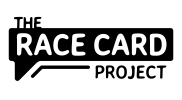John Ise,
Miami, FL
Something that I wrote for the Biscayne Times newspaper.
It’s worth considering that perhaps the best antidote to racism to acknowledge that “race”, at its core, isn’t real. Racism indeed is real, but race is a man-made fiction. It’s further worth considering if we can transcend race while being hyper-conscious about race.
The ultimate question for society writ-large is whether racism can be “cured.”
Can these hostilities and suspi¬cions, be they overt or subconscious, be remedied? Probably yes, but only through spontaneous and relaxed one-on¬ one free-flow communications over any organized effort about “overcoming racism”.
Perhaps we need not greater racial consciousness, but less – as in none.
Maybe we need to approach the topic of race from the purely scientific vantage of biology and genetics, and not sociology.
Peter Prontzos, a professor emeritus in Vancouver, B.C., has written “The Concept of ‘Race’ ls a Lie” (Scientific American, May 14, 2019), and quotes from a 2018 statement the board of the American Society of Genetics issued out of alarm in a “resurgence of groups rejecting the value of genetic diversity and using discredited or distorted genetic concepts to bolster bogus claims of white supremacy.” Their statement continued: “The science of genetics dem¬onstrates that humans cannot be divided into biologically distinct subcategories”; that “race itself is a social construct; and that ‘any attempt to use genetics to rank populations demonstrates a fundamental misunderstanding of genetics.”
Hence, Prontzos’s argument that the concept of “race” is mankind’s collective lie. He also explains that psychologi¬cally, even when we talk about solutions to racism, we cognitively, even at the subconscious level, reinforce false be¬liefs that we belong to different biologi¬cal groups. “That’s because the more a word is used,” he says, “the more that certain brain circuits are activated and the stronger that metaphor becomes.”
But how did we get here in the first place? In late 1700s, German scientist Johann Friedrich Blumenbach created one of the first race-based classifications. He developed five categories: “Cauca-sian, the white race; Mongolian, the yellow race; Malayan, the brown race; Ethiopian, the black race, and American, the red race.” He ranked each, putting Caucasian on top. This ranking was the impetus for centuries of discrimination.
Just look at the 2020 Census section on racial designations if you want to go down the rabbit hole. There’s the stan¬dard White, Black/African American, and American Indian/Native Alaskan. But then come 15 other categories like Chinese, Japanese, Korean, Filipino, and Native Hawaiian, all which are based on nationality, ethnicity, and geogra¬phy. Intimating that people from China or Korea are their own “race” seems… well … kind of racist. Even the term “African American” ignores that there’s more genetic diversity on that continent than all other continents combined.
The census then allows you to check as many of the 15 racial categories as you see fit and even to write in your own racial identification under the “Some Other Race” option. The “some other race” category, a racial category that nobody knows what exactly is meant by the term, is now the second largest ‘racial” group, after whites, per the 2020 Census. The paraphrase, the second largest racial group is…a complete mystery.
Years back, my wife and I visited the Apartheid Museum in Johannesburg, South Africa. It details the confusion the apartheid government confronted with those of mixed race. A test was devised
in which a pencil was placed in a person’s hair. If the pencil stayed in place while the person shook his or her head, then that person could not be classified as White.
Ask yourself: Are our census racial designations any more scientific than that?
Perhaps racism’s real cure is to stop hewing to these artificial, manmade boxes we put ourselves in. To paraphrase a Marxist, let us leave “race” in the ash heap of history.
If we stop the practice of nudging folks to declare a race (the purpose of which, again, was to divide people for the benefit of whites over everyone else), then maybe over time, we’ll become more indifferent to skin pigmentation. And becoming more blasé on the skin tone issue that we once categorized as “race” will make the matter as innocuous as being left-handed or red-headed.
In the end, our life experiences and culture shape who we are, not our DNA. My very white-guy DNA is 99.99 percent the same as my ebony friends in Haiti. We are biological carbon copies of one another.
Consider Yale University’s Joseph Chang, who determined that if you traced our ancestry back 150 generations, you’d find at least one person who would be mother or father to you – and everyone else. We are essentially 100th cousins with one another. We are all related, and we all share a common ancestry.
One human family.






